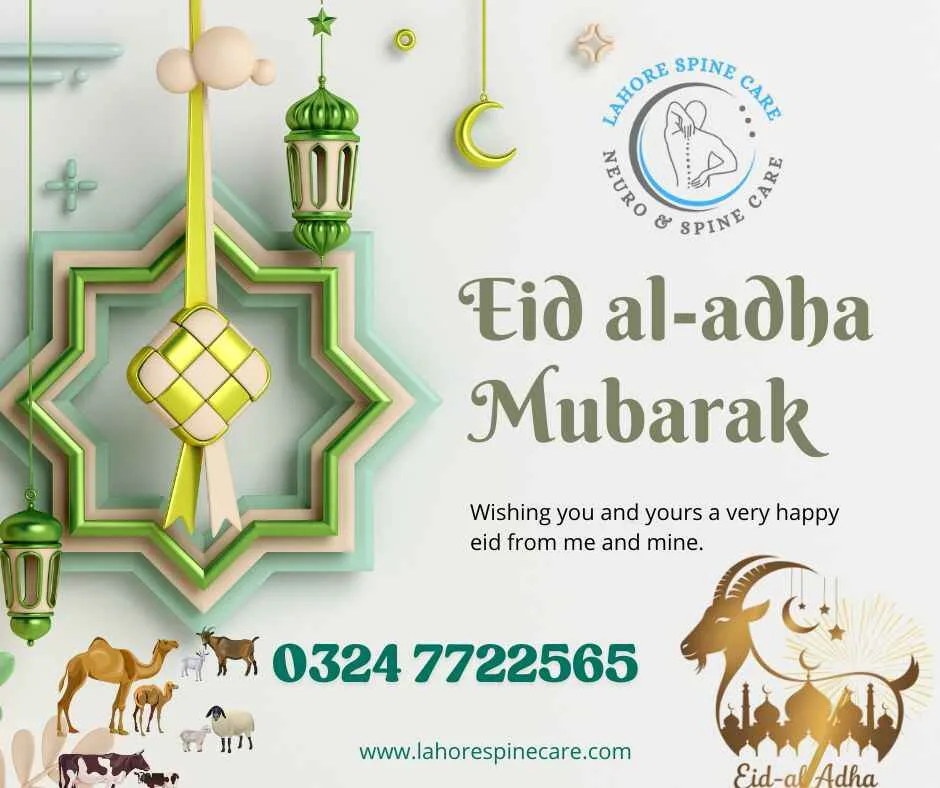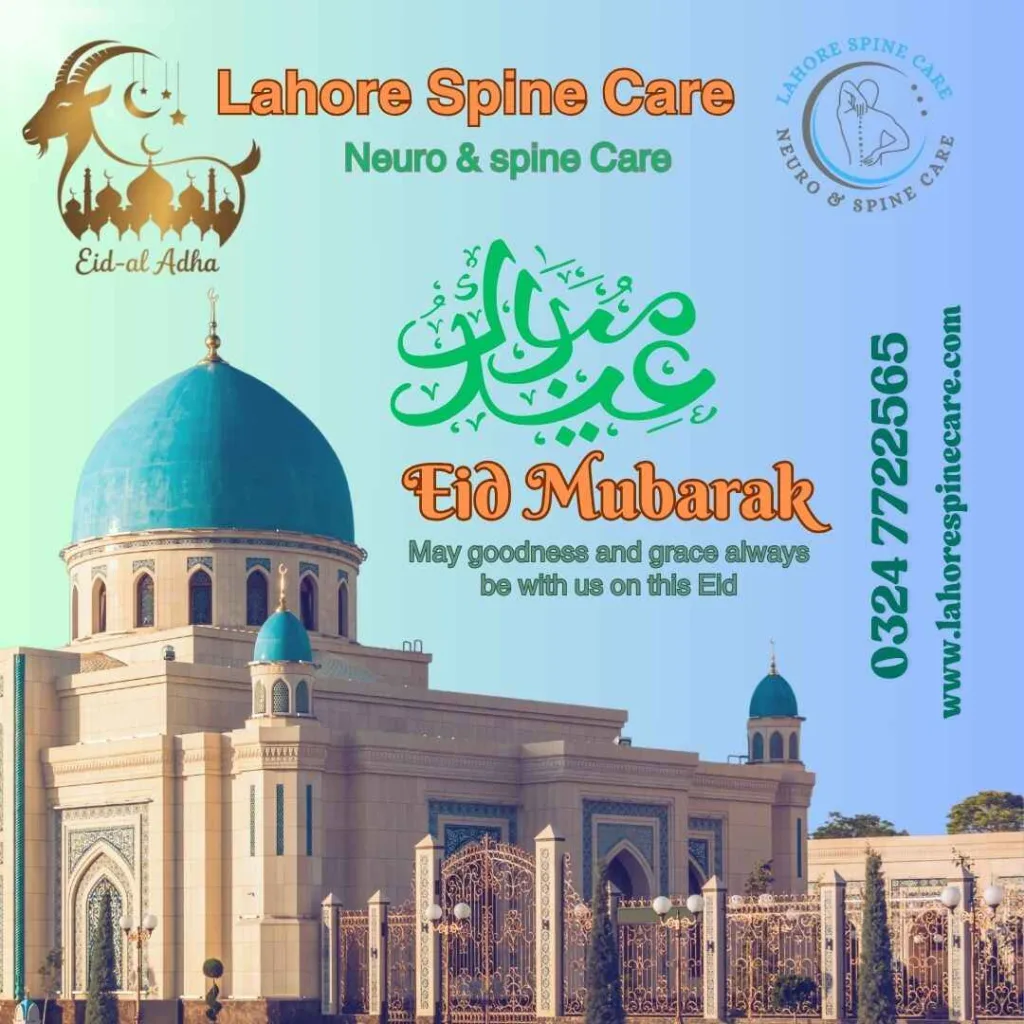LAHORE SPINE CARE

Muslims around the world mark Eid al-Adha, or the Festival of Sacrifice, with festivities as one of the leading religious observances. The day marks the faithful sacrifice of Prophet Ibrahim (Abraham) for his commitment to God. At the very moment he was about to fulfil the command, God acted and gave a ram to sacrifice. This was an important moment in Islamic history and showed ultimate trust in God’s decision.
Table of Contents
Toggle📖The Religious Value of Eid al-Adha
Eid al-Adha is observed on the 10th day of Dhu al-Hijjah and also marks the end of Hajj pilgrimage in Mecca. In this ceremony, people focus on the faith, sacrifices, and submission to God shown in the story of Ibrahim.
Those who are financially able among the Muslims are motivated to practice Qurbani, the sacrifice of an animal. There are three different sections when it comes to the meat.
- About one-third of your income should be for the family.
- About one-third of the money is likely to go to family members and friends.
- A third of my income is for those who are in need.
- It demonstrates the main Islamic values of doing something for the less fortunate, feeling sympathy, and sharing with the community.
🕌The Way Eid al-Adha Is Observed
All across Muslim communities, Eid al-Adha encourages people to pray, reflect, spend time with their families, and show generosity.
- Eid Prayer is also known as Salat al-Eid.
The first event of the day is a congregational prayer that happens in mosques or open spaces. During Eid, Muslims usually put on new clothes and then hear a sermon before the prayer.
- Sacrifice (Qurbani)
Once the prayer is finished, people carry out the ritual of sacrificing an animal such as a goat, sheep, cow, or camel. Practicing religious rules and with care and kindness is how the process is carried out. - Distributing meat and giving it as charity
People are reminded during Eid al-Adha to help others in need. People distribute meat to family, friends, and most of all to those in need, so that the festivities are open to everyone. - Feasting is a part of hospitality.
Families make traditional foods that include different servings of the animal sacrificed during the feast. Regional meals frequently have kebabs, biryani, rounknown famous shami kebabs.
🌍All over the globe, traditions bring people together.
- Even though the meaning of Eid al-Adha is unchanged, celebrations are expressed differently in different cultures.
- Pakistanis go to animal markets, prepare their sheep for sacrifice, and celebrate with BBQ feasts at home.
- In this nation, many mosques arrange large-scale sacrifices and give out the meat to numerous members of the community.
- Special meals are made in Turkey for holidays, and people in the country give meat as donations to those who need help.
- In the West, followers of Islam hold prayers, Qurbani charity, and community events with people of all religions.

💡Lesson and Principles
- Besides being a special day, Eid al-Adha leads us to rethink our kindness and care for others. It teaches:
- Losing an important item or activity to support something greater.
- Recognizing your blessings and giving thanks by sharing them with people around you.
- Giving and caring for others boosts togetherness in a community.
- To believe deeply in God, even during times that seem hard.
✨ Final Thoughts
All in all, the world can feel a lot better when we all try to be a little better.
Eid al-Adha makes millions of Muslims think, share, and bond with each other. The festival’s message is shared through prayers, family festive meals, or volunteer work, which crosses countries.
On the day of Eid, Muslims all around the world greet each other with the same wish.
“Eid Mubarak!” We wish you a happy Eid day.
LAHORE SPINE CARE is proudly powered by WordPress